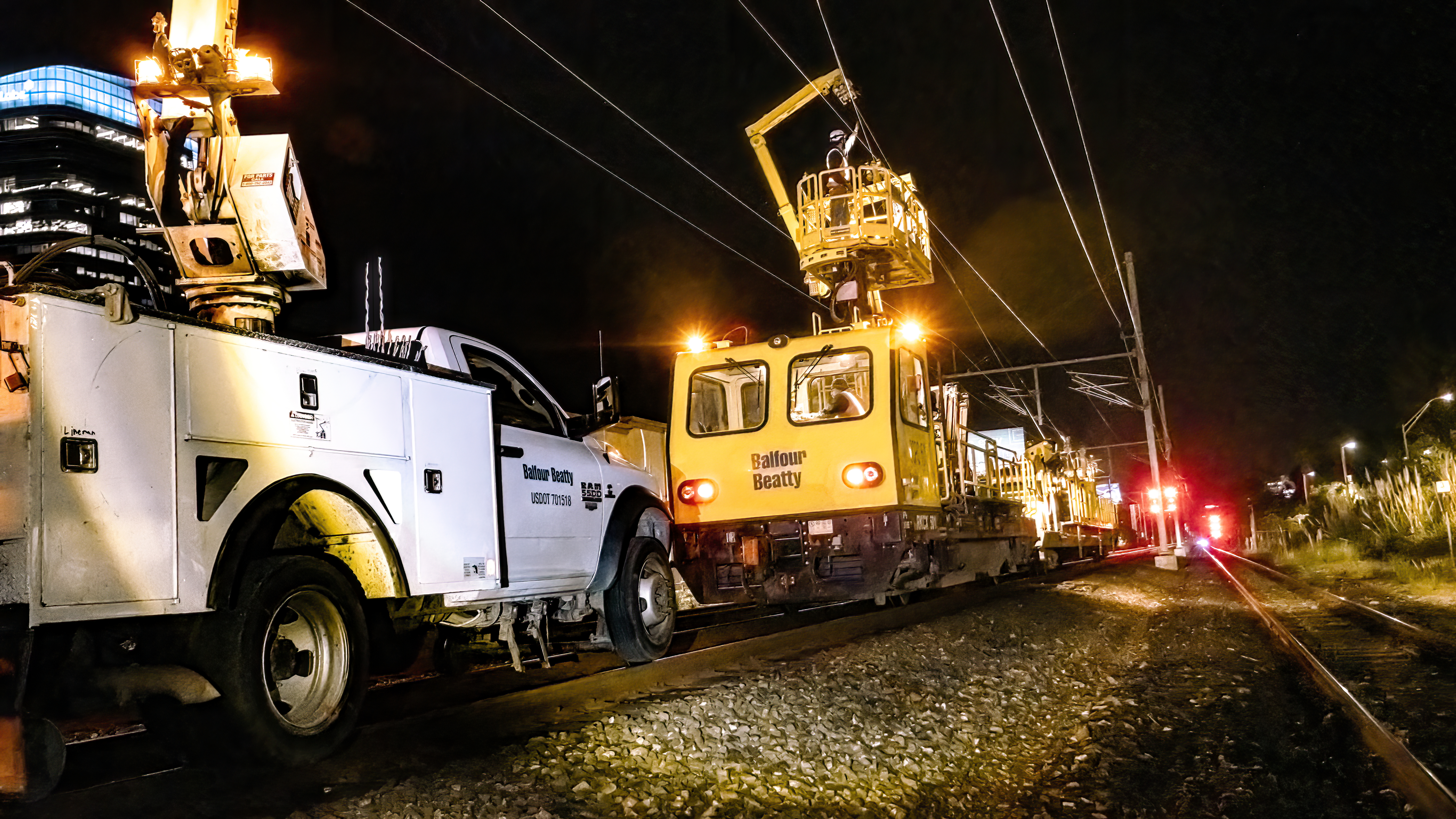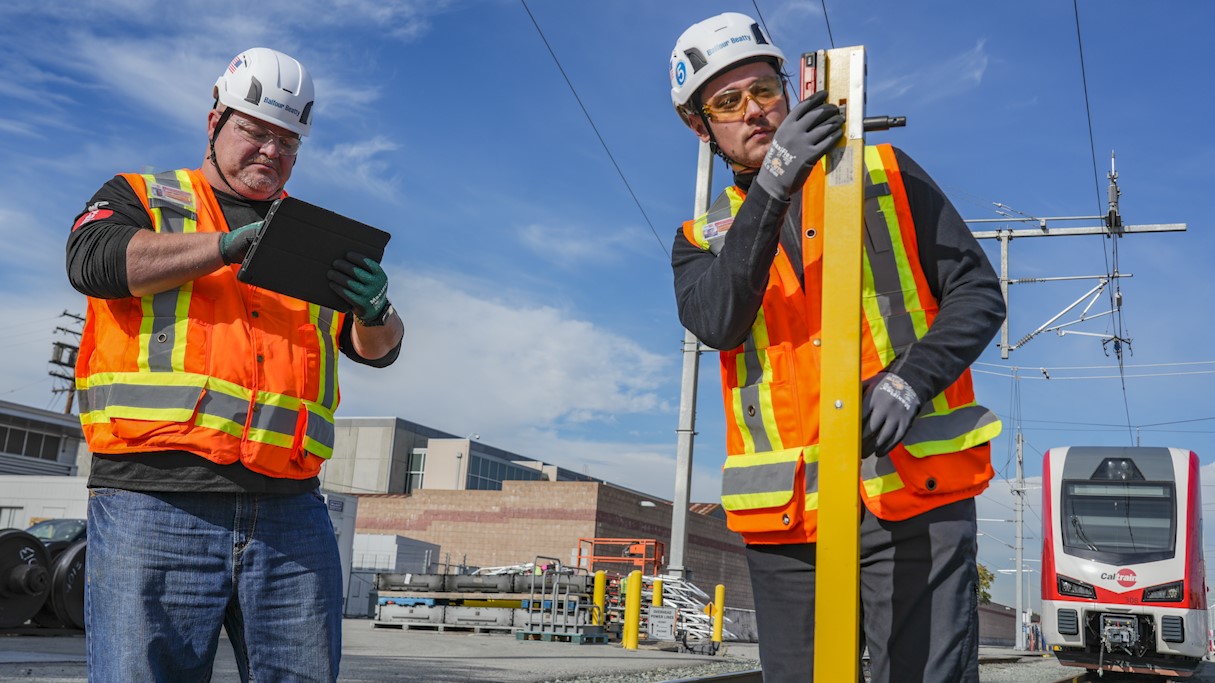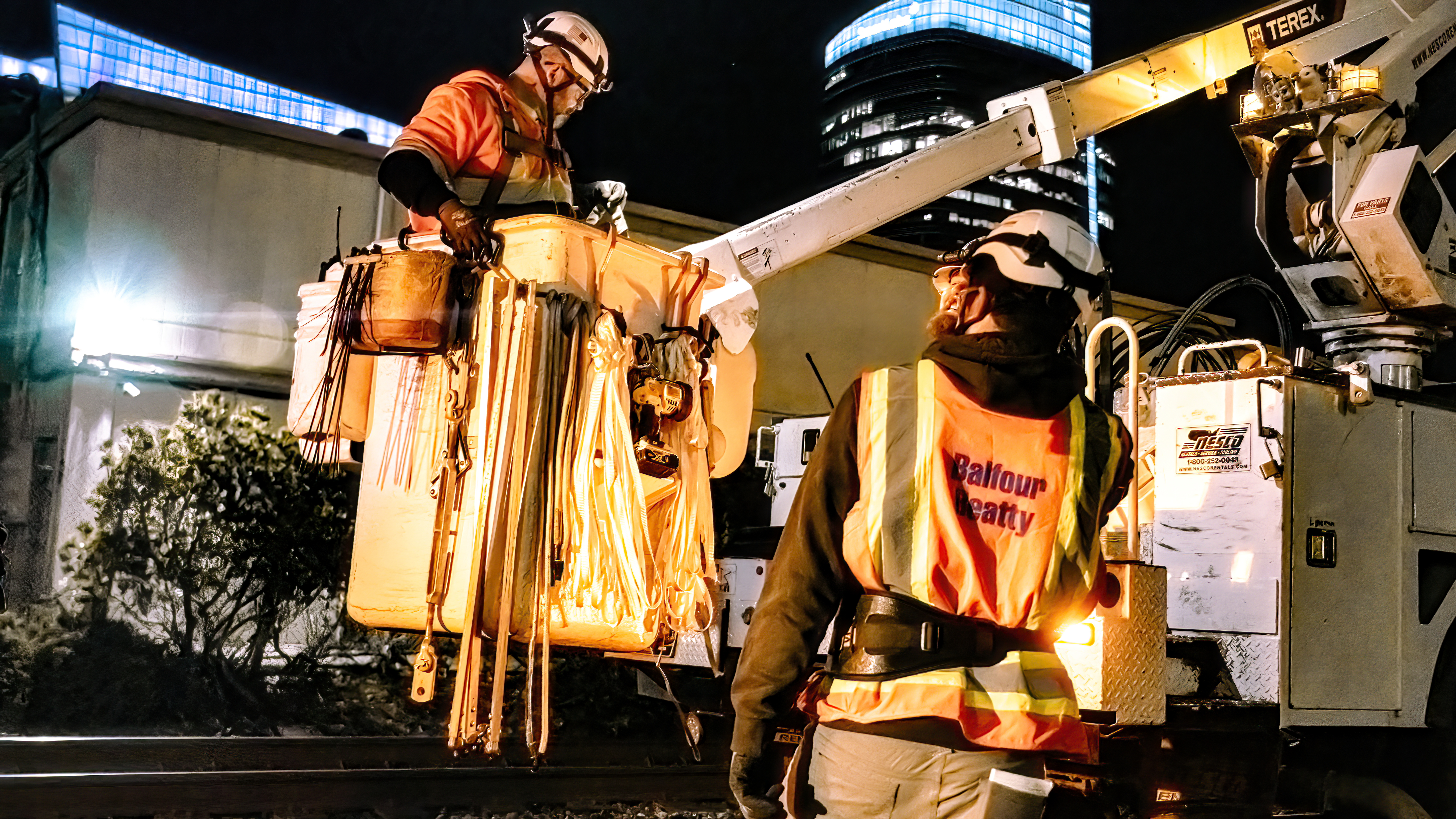Rail Done Right
Construction is a high-stakes business in every sense, with economies and public services relying on the critical infrastructure that Balfour Beatty delivers. But beyond their economic importance, infrastructure projects – especially in the rail sector - contend with uniquely compressed schedules, exacting coordination of power outages and the inherent hazards of working in electrified environments like those encountered on our Caltrain Design-Build Electrification project.
Through these challenges and more, Balfour Beatty teams prioritize consistent client communication, which helps create relationships based on trust and transparency. Our rail clients trust Balfour Beatty to understand and take ownership of the mission: to execute work safely and reliably and return rail lines to their vital role of connecting communities across Southern California and beyond.
Staying on Track
Balfour Beatty’s extensive work on the Caltrain Design-Build Electrification, part of the Caltrain Modernization Early Investment Program, includes the renovation and construction of wayside control systems, crossing warning systems, electrical substations and distribution systems, hazard detection systems, new sections of track and more. Of course, none of that work can safely occur on a section of track in active use, so every element of the project plan relies on strategic and time-sensitive power downs – the crux of our team’s intensive coordination efforts and communication with Caltrain.
 During a power down, electrical current and trains are diverted from the impacted section of track, but that is not a sustainable plan over the lifespan of multi-year project such as Caltrain. During track shutdowns, Caltrain leverages alternate, logistically complex and less ideal modes of transportation like shuttle buses to continue serving rail passengers.
During a power down, electrical current and trains are diverted from the impacted section of track, but that is not a sustainable plan over the lifespan of multi-year project such as Caltrain. During track shutdowns, Caltrain leverages alternate, logistically complex and less ideal modes of transportation like shuttle buses to continue serving rail passengers.
To minimize the logistical impact as much as possible, our teams strategically plan track and signal work often to occur during nighttime power downs – or across multi-day periods bookended by night shifts. The necessary outage time is often dictated by the spatial configuration of the track section at hand and its associated electrical substations and track switches.
In addition to these advance planning efforts, maintaining open lines of communication becomes even more important to ensure our teams are prepared for the scope of work for each individual power down. On Caltrain and other regional and industrial rail projects across California, Balfour Beatty identifies critical weekly track allocations with client stakeholders and project leaders.
“For a power down to go smoothly and without delay, every party needs a seat at the planning table, and everybody must be on the same page, from safety to maintenance to the electrical partners who ensure we can safely proceed with a new section,” adds Regional Rail General Manager Chuck Chapman. “Every stakeholder has a voice, and we ensure all are in agreement before we proceed.”
Balfour Beatty teams know firsthand that our teams’ reliability directly impacts the reliability of our clients and the commuting public. Regional light rail depends on steady commuter ridership, and riders in turn depend on reliable schedules. A track section outage announced several weeks in advance can be more effectively planned around, so Caltrain’s (and our team’s) mission is always to make sure those outages are well-planned and communicated.
Live Wires
As in every aspect of our business, Balfour Beatty’s Zero Harm mission is at the core of our safety and logistics planning on these highly complex rail projects, and understandably so; construction of any type is inherently dangerous, but rarely more so than work that occurs in close proximity to moving trains and electrical lines supplying potentially lethal voltage levels.
Just as with scheduling logistics, Balfour Beatty’s first step is a firm foundation of planning and communication, the product of which are Job Hazard Analyses (JHAs) and Safe Work Practices Plans (SWPPs) for each section of rail scope. Together with the client and regulatory authorities, our teams strive to collaboratively anticipate and engineer out safety risks long before they could ever occur. 
Keeping our teammates and partners safe, then, often takes the form of exceeding regulatory safety standards. Federal rules require a minimum working distance of four feet from active sections of track, but our teams instead work at a baseline minimum of six feet away, often further wherever possible and always underwritten by rigorous safety training with on-site teams, prominent signage in dangerous areas and more.
On sections in close proximity to active track, our teams appoint designated safety areas where our teammates gather well ahead of an oncoming train. Communication within the team on-site is just as important as the constant communication between project leaders and clients, but with lives at stake instead of schedules.
“Between overnight and overtime work shifts to achieve accelerated schedules, track and OCS line work can be grueling,” says Robert Hume, region environment, safety and health manager. “One of our most important responsibilities to our teammates and client alike is to hold true to our Zero Harm practices and ensure everyone can go home safely.”
Our scope of work on rail projects doesn’t end when the track is laid or the OCS lines are installed, tensioned and re-electrified, as track sections require thorough testing before turnover. Neither does the safety mission end until lines are fully operational. In fact, safety becomes even more important during our final testing work as the impacted track sections will re-open to trains in just hours, at which point electrical fires or any other serious safety hazards could result in significant loss or injuries.
As a differentiator, Balfour Beatty’s rail teams self-perform this work rather than contracting out to electrical trade partners. Our teams prefer full ownership and full accountability to enhance the quality of our work and oversee a rigorous testing process before re-electrification and reintegration into active train routes.
“Our teams are built on collective expertise, honed over years of working on the most prestigious rail projects across California,” says Will Pfeffer, area operations manager, US Rail. “When we perform the electrical work and final safety testing, we can be completely confident the work was executed with excellence.”
California’s Rail Experts
 From regional and local light rail to industrial heavy rail, Balfour Beatty’s experts lead the industry in every facet of our work. Our exacting safety standards, proactive schedule planning and dedicated client advocacy are instrumental in achieving successful project outcomes.
From regional and local light rail to industrial heavy rail, Balfour Beatty’s experts lead the industry in every facet of our work. Our exacting safety standards, proactive schedule planning and dedicated client advocacy are instrumental in achieving successful project outcomes.
Commuters and travelers rely on a dependable train schedule and safely built rail infrastructure. Local and regional businesses rely on the goods and employees transported by rail, often with impacts far-flung from the immediate area of a transit system. In truth, we all depend on rail infrastructure as much as we do the interstate highway system. Our teams take that mission to heart, backed by a record of successful projects to prove it.